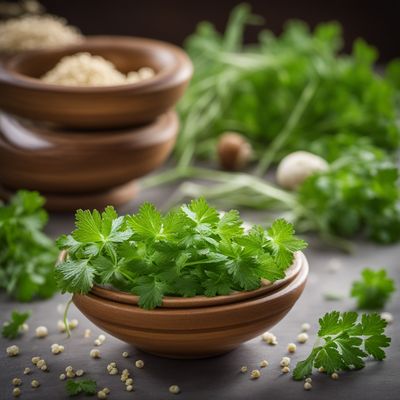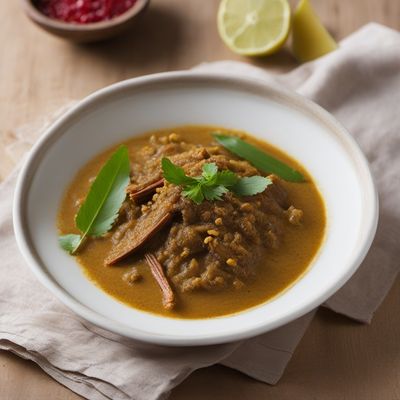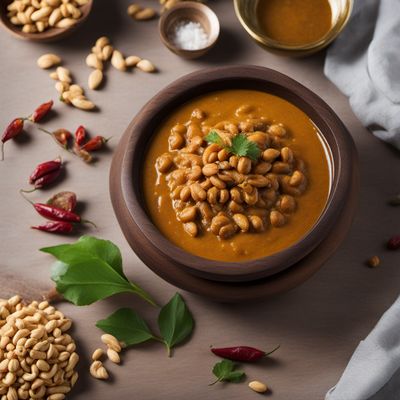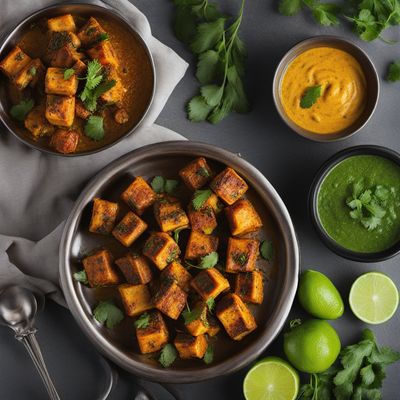
Ingredient
White ginger
The Fragrant Spice: Unveiling the Delights of White Ginger
White ginger is a rhizome with a pale yellowish-white flesh and a thin, light brown skin. It has a fibrous texture and releases a pungent, spicy, and slightly sweet aroma when sliced or grated. The flavor of white ginger is warm, peppery, and zesty, with hints of citrus and earthiness. Its appearance is characterized by its knobby shape and the presence of small buds or "eyes" on its surface.
Origins and history
White ginger is believed to have originated in Southeast Asia, specifically in the region encompassing India and China. It has a rich historical background and has been used for centuries in traditional medicine and culinary practices. It was introduced to Europe during the spice trade and quickly gained popularity for its unique flavor and medicinal properties.
Nutritional information
White ginger is low in calories and fat, making it a healthy addition to dishes. It contains essential nutrients such as vitamin C, magnesium, potassium, and manganese.
Allergens
White ginger is generally considered safe for consumption and is not known to cause common allergenic reactions. However, individuals with specific sensitivities or allergies to ginger should exercise caution.
How to select
When selecting white ginger, look for rhizomes that are firm, plump, and free from wrinkles or mold. The skin should be smooth and unblemished. Avoid ginger with soft spots or signs of decay. Freshness can be determined by the intensity of its aroma and the vibrant color of the skin.
Storage recommendations
To maintain the freshness of white ginger, store it in a cool, dry place away from direct sunlight. It can be refrigerated in a sealed plastic bag for up to three weeks. Alternatively, you can freeze ginger by peeling and grating it, then placing it in an airtight container or freezer bag for up to six months.
How to produce
White ginger can be grown at home by planting ginger rhizomes in well-draining soil and providing them with warm and humid conditions. It requires a long growing season and can be cultivated in containers or directly in the ground.
Preparation tips
To prepare white ginger, peel the skin using a vegetable peeler or the edge of a spoon. It can be grated, sliced, minced, or pounded to release its flavors. White ginger is commonly used in stir-fries, curries, marinades, soups, and baked goods. It pairs well with garlic, soy sauce, citrus fruits, and various spices.
Substitutions
If white ginger is not available, you can substitute it with dried ginger powder or ground ginger. However, keep in mind that the flavor may differ slightly, so adjust the quantity accordingly.
Culinary uses
White ginger is a staple ingredient in Asian cuisines, particularly in Thai, Indian, and Chinese dishes. It adds depth and complexity to curries, stir-fries, and sauces. It is also used in baking, where it imparts a warm and spicy flavor to cookies, cakes, and gingerbread.
Availability
White ginger is commonly available in countries such as India, China, Thailand, and other Southeast Asian countries. It is also cultivated in tropical regions around the world.
More ingredients from this category » Browse all

Lemon myrtle (fresh herb)
Citrus Sensation

Aniseed myrtle
The Fragrant Australian Spice

Rosemary and similar-
The Aromatic Herb

Thyme and similar-
The Aromatic Herb: Thyme and Its Cousins

Laurel and similar-
Aromatic Leaves: Unveiling the World of Laurel and Similar Herbs

Chives and similar-
Delicate Allium Delights

Celery leaves and similar-
The Green Elixir: Unleashing the Power of Celery Leaves

Wintergreen leaves
The Refreshing Minty Herb

Sage and similar-
"The Herb of Wisdom: Exploring the Versatility of Sage and Similar Ingredients"

Chervil and similar-
"The Delicate Herb: Unveiling the Secrets of Chervil and Similar Ingredients"

Sassafras leaves
The Aromatic Wonder: Unveiling the Secrets of Sassafras Leaves

Evening primrose leaves
The Medicinal Marvel of Evening Primrose Leaves
Recipes using White ginger

Matsumaezuke - Japanese Pickled Vegetables
Harmony in a Jar: Matsumaezuke - A Symphony of Japanese Pickled Vegetables

Molecular Sushi
Sushi Reimagined: A Molecular Gastronomy Twist

Pashtun-style Spicy Curry Paste
Fiery Pashtun Curry Paste: A Burst of Flavors from the East

Homemade Gari: The Perfect Pickled Ginger Recipe
Gari: The Zesty Sidekick of Japanese Cuisine

Grilled Rabbit Skewers with Spicy Peanut Sauce
Savory Bunny Bites: Grilled Rabbit Skewers with a Spicy Peanut Twist

Wallis and Futuna Nihari
Savory Slow-Cooked Beef Stew from Wallis and Futuna

Peanut Delight Chutney
Creamy Peanut Chutney: A Nutty Twist to Indian Cuisine

Antiguan Minty Paneer Tikka
Caribbean Twist: Minty Paneer Tikka with a Tropical Flair

Chasha Zemma - Georgian Spiced Tea
Warm and Spiced: Chasha Zemma - A Georgian Tea Delight

Molecular Gastronomy Hot Pot
The Molecular Melting Pot: A Modern Twist on Hot Pot